Phonics - Early Reading
Reading
Reading skills are embedded throughout the curriculum alongside the teaching of decoding. In Early Years and year 1 children read books linked to the phonics sound that they are learning in small groups or individually. During reading sessions children are given time to practise their decoding skills and show their understanding of what has been read through their oral responses to questions.
When children can successfully decode, they will begin to record their responses independently following input from the teacher in a guided group.
As they move through school children will move to whole class reading to further develop their reading skills. For whole class reading, children complete work based on the class novel, with linked texts to increase the variety of writing that children are exposed to.
Reception
In Reception children are taught phonics daily for 20 minutes using Jolly Phonics, which is a child centred approach to teaching literacy through synthetic phonics.
This ensures that all children have access to high-quality phonics teaching so that all children:
- Have a solid base to build upon as they progress through school
- Are supported and encouraged to develop the habit of reading widely and often, for both pleasure and information.
The school subscribes to Phonics Play and parents are given home access. Each session consists of: recapping sounds that children have already learnt; introducing a new sound; learning the action and song; writing the grapheme.
Phonics is taught as a whole class session. Interventions are planned for those children who require further support with securing their phonic knowledge at any stage.
Phase 2: Letters and their sounds are introduced one at a time.
- Set 1: s, a, t
- Set 2: p, i, n
- Set 3: m, d, g
- Set 4: o, c, k, ck
- Set 5: e, u, r
- Set 6: h, b, f
- Set 7: ff, l, ll, ss
- Tricky Words: the, to, I, go, no
Phase 3: By the time they reach Phase 3, children will already be able to blend and segment words containing the 19 letters taught in Phase 2.
Over the course of teaching Phase 3, twenty-five new graphemes are introduced (one at a time).
- Set 8: j, v, w, x
- Set 9: x, y, z
- Set 10: zz, qu
- Consonant digraphs: ch, sh, th, ng
- Vowel digraphs: ai, ee, igh, oa, oo, ar, or, ur, ow, oi, ear, air, ure, er
- Tricky words: he, she, we, me, be, was, you, they, all, are, my, her
By the end of the year all children should have completed phase 2 and 3 and be ready to start phase 4.
Year 1
Phonics is taught daily in Year 1 for 25 minutes. Sessions within class are differentiated to ensure pupils are reaching their full potential.
Phase 4 - No new sounds. The aim of this phase is to combine the children’s knowledge of previous sounds learnt and help them to read and write CVCC (lamp, desk, sink) and CCVC (frog, crab, swim) words.
Tricky Words: said, have, like, so, do, some, come, were, there, little, one, when, out, what
Phase 5: In Phase Five, children will learn more graphemes and phonemes. For example, they already know ee as in keep, but now they will be introduced to ea as in eat and e-e as in theme.
5a Sounds:
- Set 1: ay, ou, ie, ea
- Set 2: oy, ir, ue, aw
- Set 3: wh, ph, ew, oe, au, ay
- Set 4: a_e, e_e, i_e, o_e, u_e
- Split digraphs: a-e (cake) e-e (theme) i-e (life) o-e (home) u-e (rule)
5b Sounds:
- Set 1: Alternative pronunciations: i, o, c, g, u
- Set 2: Alternative pronunciations: ow, ie, ea, er
- Set 3: Alternative pronunciations: a, y, ch, ou
- Tricky Words: oh, their, people, Mr, Mrs, looked, called, asked, could
By end of year all children should have completed phase 4 and 5 and be ready to move on to phase 6.
Year 2
Children who have passed the phonics screening check in Year 1 will move on to phase 6: this focuses on teaching spelling patterns and high frequency words. If children require further phonics teaching, this is taught in small groups.
By the end of the year all children should have completed Phase 6 and will continue working on spelling patterns as they progress through school.
Reading Lists
To support our literacy curriculum and to promote reading for pleasure, we have provided parents and teachers a number of booklists, which cover a range of themes and curriculum subjects. They have been curated by CLPE and are aimed to children from EYFS and Year 7 (for pupils reading above Y6 standard).
Please click here to view our reading list.
- Phonics in a Rich Reading Curriculum Booklist
- Alphabets Booklist
- Arthurian Legends Booklist 0
- Autism Awareness Week
- Black History booklist
- Celebrate Kindness Booklist updated
- Early reading- phonics- progression map
- Environment booklist 2021
- Fearless Females Booklist
- Feast and Famine Booklist
- Girl Detectives
- Hans Christian Andersen Booklist
- Human Rights Day
- International Womens Day 2021
- Norse Myths reformatted
- Nursery Rhymes Booklist
- Reading Knowledge and Skills Progression Document
- Red Riding Hood Linked Books
- Refugee Booklist updated
- Roger McGough Poetry Booklist Dec 17
- Selkie Mermaids Booklist
- Womens History Month 2018
- Wordless books 2021
- World War 1 Booklist
- World War II for web
Phonics - Early Reading Progression Map
